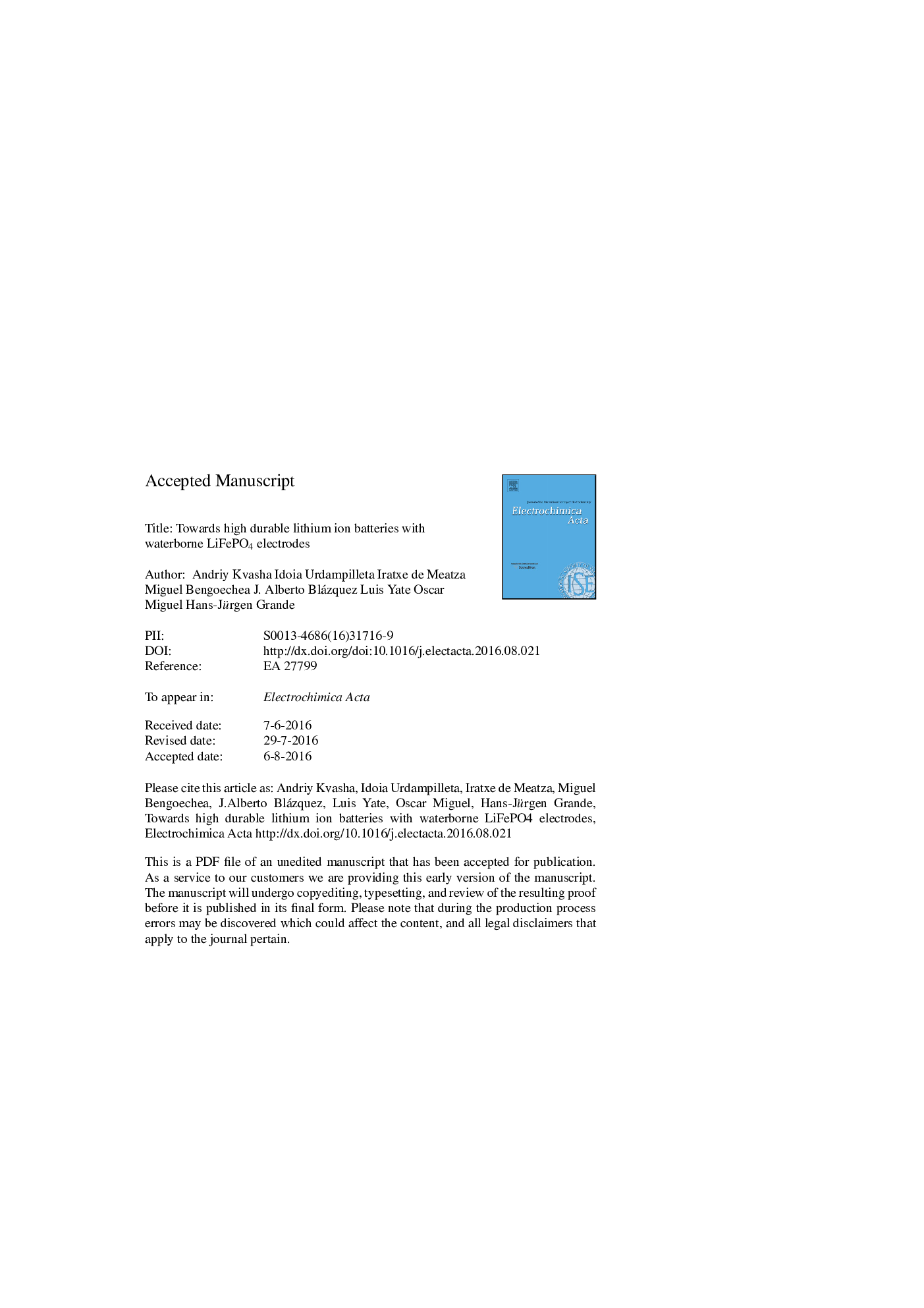| Article ID | Journal | Published Year | Pages | File Type |
|---|---|---|---|---|
| 6473129 | Electrochimica Acta | 2016 | 29 Pages |
Abstract
The positive electrodes based on nano- and micrometric carbon coated LiFePO4 (LFP) powders are prepared via aqueous slurry processing using “normal” and “intensive” mixing procedures. The XRD, XPS, and electrochemical characterization reveal that the “intensive” mixing process improves the discharge C-rate capability of the n-LFP cathode however provokes formation of an undesirable thin surface layer enriched by Fe3+ species. The waterborne graphite anodes and LiFePO4 cathodes for the energy and power cells are being developed, upscaled and manufactured on a pilot plant. Energy LiFePO4/C pouch cells demonstrate outstanding durability maintaining 80% of initial discharge capacity (IDC) after 7450 and 2400 full cycles under 1D and 4D discharge currents, respectively. Moreover, further cycling of the energy cell working under 1C/4D protocol reveals its extra-long secondary life (70% of IDC on 9200th cycle). Power LiFePO4/C pouch cell shows long lasting cycle life retaining 80% of IDC after 3350 cycles under harsh cycling conditions (3C/8D). The reported results are being achieved despite confirmed water release from lithium iron phosphate cathodes to the electrolyte. Finally, viability of aqueous processing of the electrodes without sacrificing electrochemical performance of LiFePO4/C batteries is clearly proven.
Related Topics
Physical Sciences and Engineering
Chemical Engineering
Chemical Engineering (General)
Authors
Andriy Kvasha, Idoia Urdampilleta, Iratxe de Meatza, Miguel Bengoechea, J. Alberto Blázquez, Luis Yate, Oscar Miguel, Hans-Jürgen Grande,
